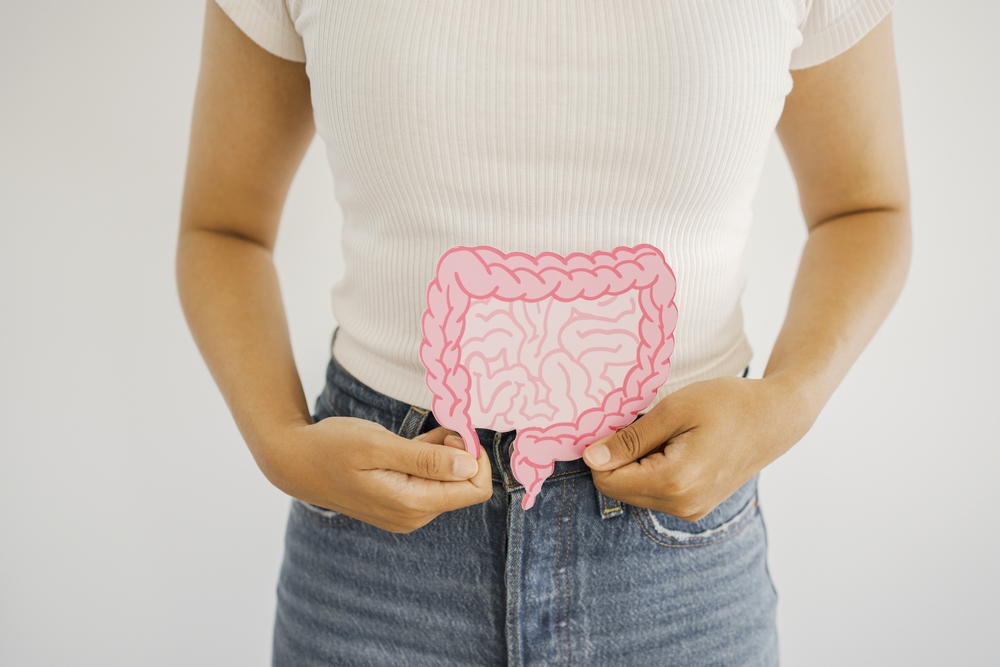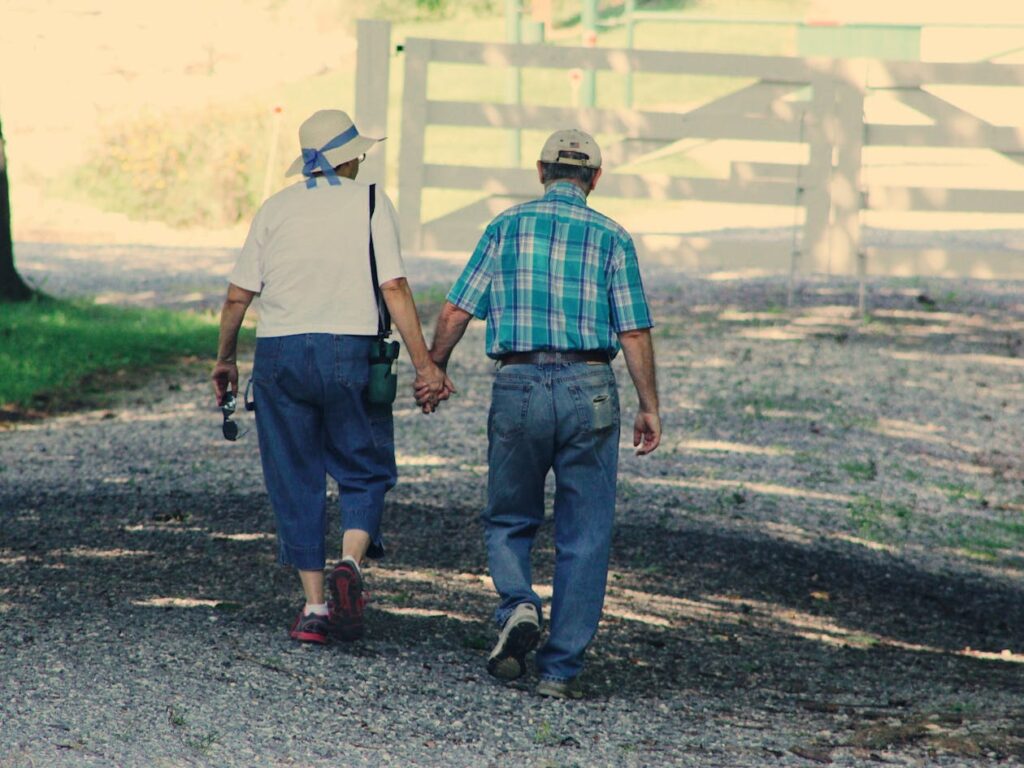Why Aging Hits You Like a Truck at 44 and 60 (And What to Do About It)

You wake up one morning and something feels different. Yesterday, you could bounce back from a night out. Today, your body rebels against that second glass of wine. You catch your reflection and notice lines that weren’t there last month. Your knee aches after a routine jog.
What if these changes aren’t random? What if your body follows a secret schedule, aging in dramatic bursts rather than slowly deteriorating year by year?
Stanford scientists just discovered something that changes everything we thought we knew about getting older. After tracking 108 people for years and analyzing 246 billion data points from blood, stool, skin, and saliva samples, researchers found that aging doesn’t creep up on you gradually. Instead, your body undergoes two massive transformations around age 44, another at 60.
Science Says You Don’t Age Smoothly

Forget what you learned about aging being a steady decline. Stanford researchers discovered that 81% of molecular changes in your body happen non-linearly. Only 6.6% of molecules follow that predictable, gradual pattern doctors have described for decades.
Scientists measured over 135,000 different molecules and microbes, including proteins, metabolites, and RNA molecules linked to immune health, heart function, metabolism, kidney function, and muscle structure. They expected to see consistent, gradual changes across the decades.
Instead, they found waves. Massive waves of molecular disruption that peak twice in your lifetime.
David Sinclair, a Harvard Medical School longevity researcher, admits: “The research seems to fly in the face of current models of aging, particularly the epigenetic clock and other gradual and linear changes such as steady increases in blood sugar levels.”
Both men and women experience these aging bursts at roughly the same ages, suggesting a universal human aging pattern that transcends gender. Menopause doesn’t explain the changesmen show identical patterns.
What Actually Happens When You Hit 44
Your first major aging burst impacts your body in surprising ways. You might feel it in your energy levels or see it in the mirror. Below the surface, even more dramatic shifts begin. Here is what scientists found.
Your Metabolism Hits a Wall

Around age 44, your body’s ability to process alcohol and caffeine nosedives. Molecules affecting metabolism shift dramatically. Those two drinks that never bothered you? Now they leave you foggy for days. Your morning coffee that provided a gentle boost? It keeps you wired until midnight.
Fatty tissue proteins change, explaining sudden weight gain despite unchanged eating habits. Cholesterol levels spike without warning. Your liver works overtime but achieves less. Fat storage patterns shift suddenly, your midsection expands while your arms stay the same.
Scientists identified specific pathways that break down: alcohol metabolism efficiency drops sharply, lipid processing becomes sluggish, and your cells struggle to maintain energy balance. Your body literally processes food and drinks differently than it did at 43.
Skin and Muscles Start Their Rebellion
Connective tissue proteins associated with skin and muscle structure transform around age 44. Collagen production doesn’t just slow; it crashes. Elastin, which keeps skin bouncy and resilient, decreases rapidly.
Muscle injuries become more frequent because your muscle fiber repair mechanisms falter. A pulled hamstring that would have healed in a week now lingers for months. Your tendons and ligaments lose flexibility. Morning stiffness becomes your new normal.
Scientists found that molecules controlling cell adhesion, which determine how cells stick together to form tissues, dysregulate significantly. Your skin literally holds together less effectively. Wrinkles form not gradually, but in spurts as structural proteins fail.
Hidden Changes You Can’t See Yet
While you notice external changes, internal shifts prove even more dramatic. Cardiovascular disease risk accelerates as platelet degranulation and blood coagulation pathways destabilize. Your blood becomes stickier, more prone to clotting.
Complement cascade systems that regulate inflammation go haywire. Low-grade inflammation spreads throughout your body, setting the stage for future diseases. Your cells’ ability to repair DNA damage plummets between ages 44 and 50.
Age 60 Brings an Even Bigger Storm

If you thought 44 was tough, this next wave hits even harder. Your body braces for another massive molecular shift. Several key systems seem to malfunction all at once, leading to rapid declines.
Your Immune System Goes Haywire
At 60, your immune system undergoes catastrophic changes. Scientists identified massive dysregulation in the acute-phase response, antimicrobial defenses, and viral resistance pathways. You don’t just get sick more often; you stay sick longer.
White blood cell differentiation falters. Your body produces fewer effective immune cells while inflammatory markers skyrocket. COVID-19 hits 60-year-olds harder for this exact reason, not because they’re “old” but because they’ve crossed this molecular threshold.
Cancer rates explode after 60, partly because your immune surveillance systems fail. Abnormal cells that your body once destroyed now slip through weakened defenses.
Kidney Function Takes a Nosedive
Blood urea nitrogen levels, which indicate kidney function, show sharp increases after age 60. Your kidneys filter blood less efficiently, allowing toxins to accumulate. Blood pressure becomes harder to control as kidney regulation mechanisms break down.
Scientists found specific molecular changes in glomerular filtration pathways; the kidney’s filtering units literally work more slowly. You need more water to achieve the same toxin clearance. Medications require dose adjustments as your kidneys process them differently.
Carbohydrate Processing Breaks Down
Serum glucose markers shift dramatically at age 60. Your body’s carbohydrate metabolism pathways undergo what scientists call “substantial dysregulation.” Blood sugar spikes higher and stays elevated longer after meals.
Type 2 diabetes risk doesn’t gradually increase with age; it accelerates sharply after 60. Your cells become more insulin-resistant seemingly overnight. Energy production becomes inefficient as mitochondrial function declines.
Why Your Body Does This to You

Your cells contain DNA instruction manuals for making proteins essential for life. Over time, damage accumulates in these instructions. Young bodies repair this damage efficiently. But repair mechanisms themselves age.
Telomeres, protective caps on chromosomes, shorten with each cell division. At 44 and 60, they reach critical lengths where cellular function degrades rapidly. Mitochondria, your cells’ power plants, accumulate defects until energy production crashes at these age points.
Epigenetic changes modifications that affect gene expression without changing DNA sequence accumulate until they reach tipping points. Genes that should stay quiet activate. Genes that should work shut down.
Scientists call it “punctuated equilibrium,” long periods of stability interrupted by rapid change. Evolution programmed these bursts into human biology for reasons we don’t fully understand.
Blue Zone Secrets for Both Bursts
People in Blue Zones regions, where residents routinely live past 100, navigate these aging bursts successfully. They share common strategies: strong community connections, plant-heavy diets, regular movement, and purposeful living.
Okinawans practice “hara hachi bu” eating until 80% full. Sardinians walk mountainous terrain daily. Costa Ricans maintain “plan de vida” reason to live. Californian Adventists observe the Sabbath, ensuring weekly stress relief.
These populations don’t avoid aging bursts. They prepare their bodies to weather them through lifelong healthy practices that build resilience before crisis points hit.
Your 40s Survival Guide
Start weight training immediately if you haven’t already. Muscle mass preservation becomes critical as protein synthesis pathways deteriorate. Lift heavy weights at least twice weekly, focusing on compound movements like squats and deadlifts.
Cut alcohol consumption by half. Your liver can’t handle what it once could. Replace evening drinks with herbal tea or sparkling water with bitters. Time caffeine intake earlier, stop by 2 PM to accommodate slower metabolism.
Monitor cholesterol quarterly, not annually. Changes happen fast during this transition. Request advanced lipid panels that measure particle size, not just total numbers.
Eat antioxidant-rich foods daily: blueberries, dark chocolate, pecans, artichokes. Increase omega-3 intake through wild-caught fish or algae supplements. Protein needs jump and aim for 0.8 grams per pound of body weight.
Your 60s Defense Strategy

Exercise intensity needs careful calibration. High-intensity work remains important but requires longer recovery. Alternate hard days with gentle movement like tai chi or swimming.
Sleep becomes medicine. Prioritize 7-9 hours nightly. Create rigid sleep schedules. Your circadian rhythm regulation weakens, making consistency crucial.
Hydration requirements increase as kidney function declines. Drink water consistently throughout the day, not in large bursts. Monitor urine color: pale yellow indicates adequate hydration.
Review all medications with your doctor. Dosages that worked at 55 may prove excessive at 61 as kidney clearance slows. Watch for new side effects from long-term medications.
What Science Doesn’t Know Yet
Stanford’s study tracked Californians for a median of 1.7 years not long enough to observe individual aging trajectories across decades. Lifestyle factors like exercise and diet weren’t fully controlled. We don’t know if these patterns hold across all ethnicities and geographic regions.
Scientists can’t explain why these specific ages trigger molecular avalanches. They observe the what, not the why. Individual variation remains huge; some people’s bursts come earlier or later.
You Can Change Your Aging Story
Samuel Lin, Harvard Medical School associate professor of surgery, offers hope: “While we cannot stop the aging process, understanding the molecular changes highlighted in this research empowers us to take steps that can enhance our quality of life and help us age more gracefully.”
Knowing these bursts approach allows preparation. You can’t prevent them, but you can build resilience beforehand and respond appropriately when they hit.
Start interventions before each burst, not after. If you’re approaching 44 or 60, consider this your early warning system. Your body will transform whether you’re ready or not. Choose to be ready.
Small changes compound. Walking 15 extra minutes daily. Choosing fish over steak twice weekly. Setting a firm bedtime. These actions seem insignificant until molecular chaos hits and your prepared body weathers the storm while others struggle.
Action Steps Starting Today

This week: Schedule comprehensive blood work, including inflammatory markers. Start a food diary to establish baseline eating patterns. Walk 7,000 steps daily minimum.
This month: Join a strength training program. Eliminate one processed food category. Establish a consistent sleep schedule, including weekends.
This year: Build your healthcare team, primary care physician, nutritionist, and personal trainer. Track key biomarkers quarterly. Create accountability through community join groups focused on healthy aging.
Your body will age in bursts. Science confirms it. But you get to decide how well you’ll handle those transformations when they arrive.
Loading...

